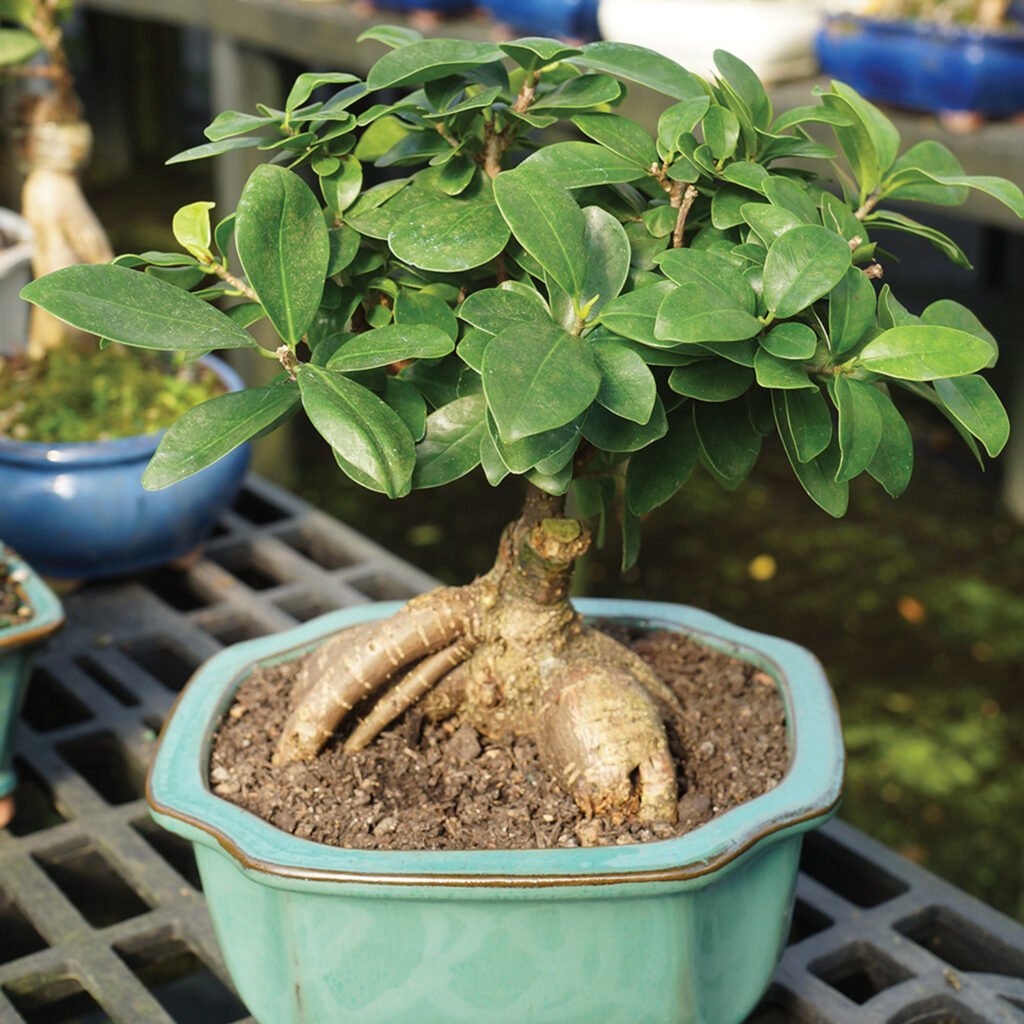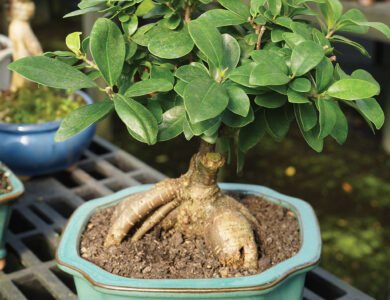The Ficus microcarpa ginseng, often referred to as the ginseng ficus, is a unique and visually captivating houseplant. Known for its thick, gnarled roots resembling ginseng (hence the name), and its small, glossy leaves, this bonsai-like plant makes an excellent centerpiece for homes and offices. Whether you’re a bonsai enthusiast or a beginner looking for a low-maintenance plant, learning how to care for a Ficus microcarpa ginseng is essential for its longevity and beauty.
Understanding Ficus Microcarpa Ginseng
Native to Southeast Asia, Ficus microcarpa ginseng is prized for its unusual root structure and easy care requirements. Unlike traditional bonsai trees that require intricate training, the ginseng ficus comes pre-shaped, making it accessible to plant owners of all experience levels.
1. Light Requirements: Bright and Indirect
Ficus microcarpa ginseng thrives in bright, indirect light, mimicking its natural tropical habitat. Place it near a window where it receives plenty of filtered sunlight. Avoid direct sunlight, which can scorch its leaves, and low-light areas, which may lead to stunted growth.
If natural light is limited, consider supplementing with a grow light to maintain its health and vigor.

2. Watering: Consistency is Key
The ginseng ficus prefers soil that is consistently moist but not soggy. Water the plant when the top inch of soil feels dry. Be cautious not to overwater, as this can lead to root rot, a common issue with this species. During the growing season (spring and summer), it may require more frequent watering, while in winter, reduce the frequency as its growth slows.
3. Temperature and Humidity: Tropical Comfort
Ficus microcarpa ginseng thrives in warm temperatures between 60-75°F (16-24°C) and enjoys moderate to high humidity. Keep the plant away from cold drafts, heating vents, and air conditioners, as sudden temperature fluctuations can stress it. To maintain humidity, mist the plant occasionally or place it on a pebble tray filled with water.
4. Pruning: Maintain Shape and Health
Regular pruning is essential to maintain the bonsai-like shape of the ginseng ficus. Trim back any overgrown branches or yellowing leaves using sterilized scissors. Pruning not only improves its appearance but also promotes new growth.
5. Soil and Potting: Well-Draining Medium
Use a well-draining bonsai soil mix to prevent water from accumulating around the roots. The pot should have drainage holes to avoid waterlogging. Repot the plant every 2-3 years to refresh the soil and provide room for its roots to grow.
6. Fertilization: Feed Regularly
During the growing season, feed your Ficus microcarpa ginseng with a balanced liquid fertilizer every 4-6 weeks. Fertilization helps sustain its growth and keeps the foliage vibrant. Reduce feeding during fall and winter when the plant is dormant.
Common Issues and Solutions
- Yellowing Leaves: This may indicate overwatering or inadequate light. Adjust your care routine accordingly.
- Leaf Drop: Often caused by environmental stress, such as sudden changes in light, temperature, or humidity. Keep the plant’s conditions stable.
- Pests: Watch for common pests like spider mites and scale. Treat infestations with neem oil or insecticidal soap.
Conclusion
Ficus microcarpa ginseng is a fascinating and low-maintenance plant that brings an artistic touch to any space. By providing proper light, consistent watering, and occasional pruning, you can enjoy this plant’s striking beauty for years to come. Its ease of care and bonsai-like appearance make it a favorite among both seasoned plant enthusiasts and beginners.

